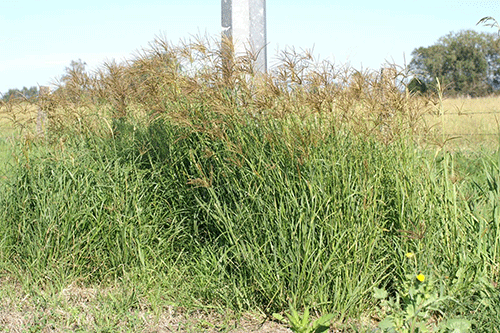Erastus Ngaruka
In Namibia, livestock production is heavily dependent on rangeland, which grows a variety of forage resources including trees, shrubs, grasses, and forbs. These plants differ in growth forms, structure, life cycles, habitat preferences, and their uses. Livestock farming in the country is dominated by grazing livestock, mainly cattle and sheep.
Moreover, these animal species mainly depend on grass, amongst others, for their nutrition. When one describes a grazing area, there are several attributes that should be key to determining the grazing value of that area. These are grass species composition, frequency, abundance, density, and soil cover amongst others.
Basically, the quality of the grass plant can be attributed to its species, growth structure and life cycle. Farmers commonly use the term palatability as an assertion of the quality of the grass. However, grasses have different levels of palatability. A palatable grass is one that an animal is attracted to or selects amongst others to graze, and this is influenced by its smell, taste, nutrients, and digestibility.
Therefore, selective grazing becomes dangerous especially when species diversity or composition is narrow, thus leading to local extinction of very sensitive valuable grass species.
One of the important attributes that farmers should understand is the grass life cycle or life span: There are two different life spans under which grasses can be classified – annual and perennial. Annual grasses refer to grasses that have a shorter life span of less than a year. They grow fast, produce seeds quickly and shed seeds for reseeding, and then the mother plant dies.
Usually, annual grasses emerge with the first rainfall or are only seen during the wet season but disappear during the dry season, usually by August. Many grazing areas in Namibia are dominated by these types of grasses as their dominance increases with rangeland degradation.
On the other hand, perennial grasses have a longer life span or last for more years. Unlike annuals, they do not die after shedding seeds but only undergo a dormancy period (stop growing) during the dry season to conserve nutrients for regrowth from the same stump in the next rainy season.
There are many different species of perennial grasses. However, not all are palatable or well utilised by grazing animals. The most valuable perennial grasses are more sensitive to continuous grazing, thus, their dominance decreases with overgrazing of rangeland degradation, which in turn gives rise to the aggressive establishment of annual grasses.
To make informed grazing management decisions, farmers need to know and understand the impact of the prevailing ecological perturbations, including herbivory, climate, and intra-and inter-specific species competitions amongst others. The reaction of the rangeland to these perturbations can be observed through its plant population establishment and distribution.
The dominating annual grasses in almost all grazing areas in Namibia currently include Schmidtia kalahariensis, Chloris virgata, Eragrostis porosa, Eneapogon cencroides, and Urochloa brachyura amongst others. The dominating perennial grasses are Stipagrostis uniplumis, Stipagrostis obtusa,
Stipagrostis hochstetteriana, Eragrostis pallens, Eragrostis rigidior, and Aristida stipitata amongst others. The most valuable perennial grasses such as Cenchrus ciliaris, Brachiaria nigropedata, Anthephora pubescens, and Schmidtia pappophoroides are only observed in well-managed or least disturbed areas in some parts of the country. Farmers can obtain more knowledge of these grasses from descriptive literature books (e.g. Grasses of Namibia) and can find common names as well. These literature materials and information can be found on the internet, bookshops, Namibia Botanical Research Institute, and university libraries, amongst others.
It is advisable that farmers engage in restorative practices on their rangelands. These include improving soil conditions, controlling bush densities, reintroducing the valuable perennial grasses by reseeding on their grazing areas, and cultivating them in gardens or crop fields. These efforts should all be aimed at reducing pressure and adding value to the rangelands, and ensuring sustainable fodder availability for livestock.
Lastly, “Farm with nature and farm with grass for profit”.
– Erastus Ngaruka is Agribank’s Technical Advisor: Livestock & Rangeland


